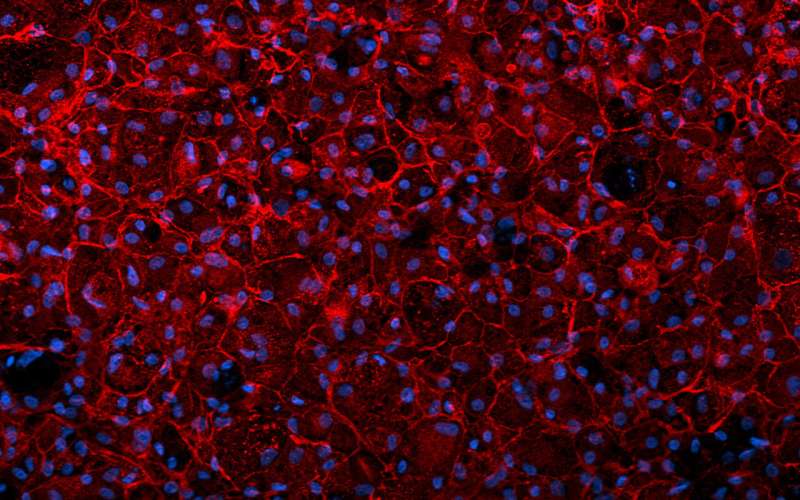This article has been reviewed according to Science X's editorial process and policies. Editors have highlighted the following attributes while ensuring the content's credibility:
fact-checked
peer-reviewed publication
trusted source
proofread
Gene editing technique shows promise for effectively curing a hereditary liver disease

Argininosuccinate lyase deficiency (ASLD), also known as argininosuccinic aciduria, is a severe metabolic disease where the body does not process proteins normally, instead resulting in a very dangerous accumulation of argininosuccinic acid and ammonia. Excess ammonia causes disturbances of consciousness, coma and even death.
In Finland, infants are screened for ASLD to determine the disease risk before symptoms develop. The treatment is an extremely strict lifelong diet, and in severe cases, a liver transplant.
Researchers from the University of Helsinki and HUS Helsinki University Hospital have now succeeded in correcting the gene defect associated with argininosuccinic aciduria and have demonstrated that the harmful metabolism caused by the disease can be cured.
In their recently completed study, they initially modified the skin cells of patients with ASLD into stem cells. Subsequently, the researchers reprogrammed the disease-causing gene defects in the stem cells using the CRISPR-Cas9 technique known as gene scissors. Finally, the researchers guided the corrected stem cells to differentiate into liver cells to see whether the disease that impairs hepatic function was actually cured and that the fixed cells no longer produced the harmful argininosuccinic acid.
"In our study, we demonstrated for the first time that the gene defect causing ASLD can be corrected with gene scissors without any adverse effects visible in the cells. The gene-corrected cells were also metabolically improved," says Docent of Stem Cell Biology Kirmo Wartiovaara, specialist in medical genetics, from the University of Helsinki and HUS.
The study was published in The American Journal of Human Genetics.
Researchers discover a suitable 'gene mixture' in a drug already in use
In the study, the researchers used mRNA encapsulated inside lipid nanoparticles to get the gene scissors inside the cultured cells.
"This 'gene mixture' we produced is based on the formula of a pharmaceutical product already in use, which may facilitate its clinical use in the future. Our next goal is to cure ASLD in mice," says Doctoral Researcher Timo Keskinen from the University of Helsinki.
"The same gene editing technique works on living animals and humans, but we don't yet know how safe it is. This is why the matter has to be investigated first in laboratory animals," Keskinen adds.
Therapeutic potential at last for hereditary diseases
There are already more than 7,000 hereditary diseases in the world. Finns, as well as other populations originating in small groups of people, have their own genetic disease variants that are more common in the population than elsewhere in the world. Many of these gene variants of our distant ancestors are such that if a child inherits the same variant from both parents, they may develop a severe disease.
Treatments are available for only a handful of hereditary diseases, and curative therapies are even more rare.
"However, a cure could be possible if the gene defect causing the disease is eliminated entirely. Thanks to basic research carried out with the help of gene scissors and other precise gene-editing techniques, permanent fixes are gradually starting to emerge," Wartiovaara says.
The study is part of the doctoral theses of Sami Jalil and Timo Keskinen, supervised at the Biomedicum Stem Cell Center of the Biomedicum Helsinki research institute by Docent Kirmo Wartiovaara and Mervi Hyvönen, DMedSc.
More information: Sami Jalil et al, Genetic and functional correction of argininosuccinate lyase deficiency using CRISPR adenine base editors, The American Journal of Human Genetics (2024). DOI: 10.1016/j.ajhg.2024.03.004





















